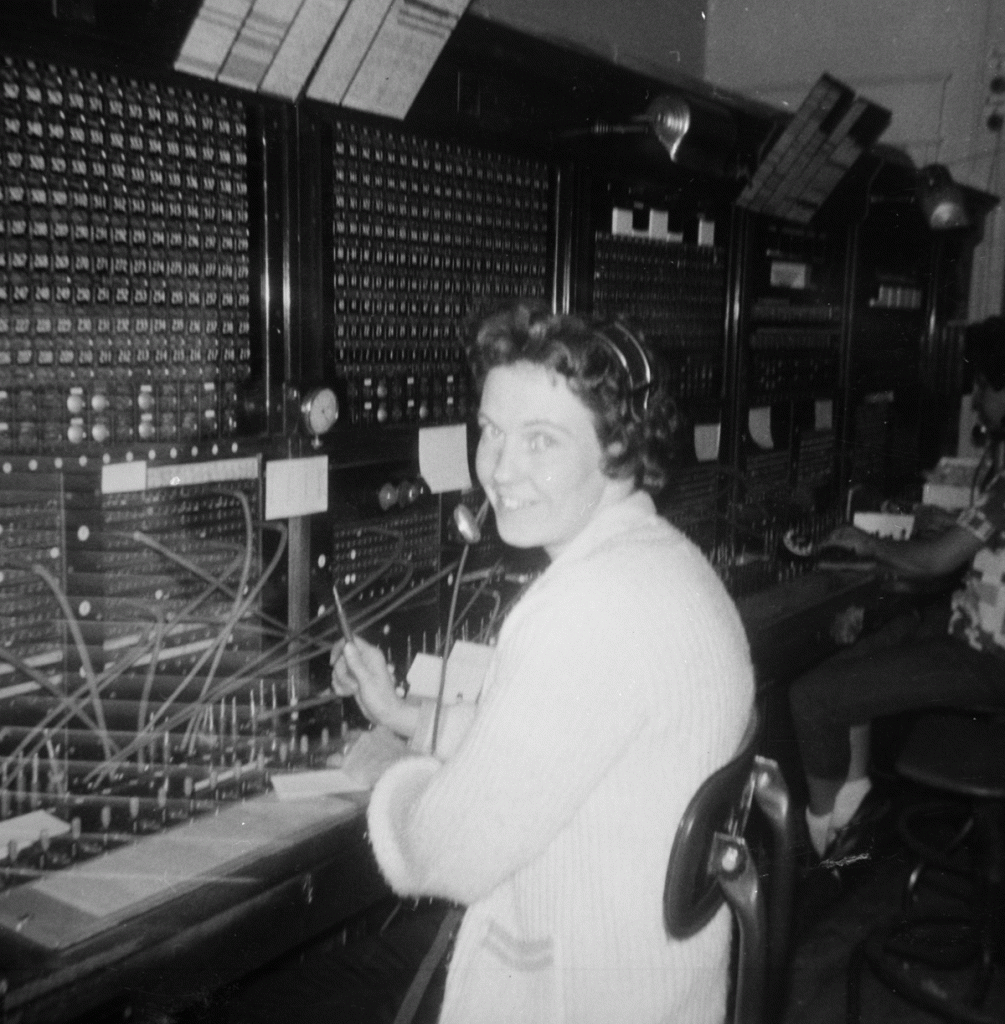Park City grew rapidly in its early days and was flush with new money from silver mining. Thus, it was among the first towns in the West to benefit from new technologies becoming available at the time, including a new-fangled service that sent voices over wires: the telephone.
In 1881, the American Bell Telephone Company issued a license to the Park City Exchange Company, and Park City became only the third city in Utah to have telephone service (after Salt Lake City and Ogden). There were approximately 60 telephones in Park City by 1882, with monthly service costing $3 (the equivalent of about $72 today). In 1883, the rapidly growing Rocky Mountain Bell Telephone Company paid $8,000 to acquire the Park City Exchange Company, and a year later long-distance service was available between Park City and Salt Lake.
Service grew with the expanding population of Park City and in 1905 an upstart competitor, the Utah Independent Telephone Company (UITC), challenged Rocky Mountain Bell’s monopoly, seeking a second franchise from the city. The City Council was divided on the issue. Mayor C. M. Wilson broke the tie in favor of more competition. It probably didn’t hurt that UITC reportedly offered the city 12 free telephones, free calls for certain police operations, and $100 to the City Treasurer.

Credit: Park City Historical Society and Museum, Wilma Larremore Collection
UITC established an office in a new mission-style building at 447 Main Street, the design of which inspired the name of a future occupant, the Alamo Saloon, now the “No Name Saloon.” (The origin of that “name” is a story for another day.) Observers can still see the large “U” at the top of the building, a remnant of its time as UITC’s office.
However, competitive telephone service in Park City was short-lived. Rocky Mountain Bell and UITC merged along with several other companies in 1911 forming what eventually became known as Mountain Bell, part of AT&T’s nationwide monopoly until it was broken up in 1982.
For much of the 20th century, all calls in Park City went through a switchboard operator. Because only a few homes and businesses had telephones in the early days, operators sometimes had to send a foot messenger to find the desired party. Doctors were asked to notify operators when they went to the theatre, so they could be found in an emergency. The last manual switchboard in Park City was not removed until 1965.
Maintaining the telephone lines, some of which crossed over to Brighton and down Big Cottonwood Canyon, was a real challenge, especially in the winter when many sites could only be reached on skis or snowshoes. Two line repairman were nearly killed in 1948 when they were caught in an avalanche near Scott’s Pass. Today, Park City residents enjoy the benefits of wireless smartphones and broadband internet, and are “wowed” by the latest app or mobile video. However, early Parkites no doubt got a similar thrill when it all started with some wires, poles, telephones, and switchboards.